Select Language

Most Asian stocks rose on Wednesday, extending recent gains amid cooling concerns over the impact of U.S. President Donald Trump’s planned trade tariffs, while regional tech stocks tracked gains in their U.S. peers.
Australian shares were the best performers for the day after softer-than-expected inflation data furthered bets on more interest rate cuts by the Reserve Bank of Australia.
Hong Kong stocks recovered from Tuesday’s losses, while Japanese shares trimmed early gains after Bank of Japan Governor Kazuo Ueda warned that the central bank will raise rates further.
Asian markets took some positive cues from Wall Street, which closed marginally higher on Tuesday on strength in major tech stocks. But uncertainty over Trump’s tariffs and weak consumer confidence data limited broader gains.
U.S. stock index futures rose marginally in Asian trade after Trump said in a Newsmax interview that he will probably be more lenient than reciprocal with his April 2 tariffs, but that he also did not want too many exceptions from his tariffs.
Earlier reports suggesting that Trump’s upcoming tariffs will be less severe than expected helped buoy Asian markets this week, although investors still remained uncertain over just what their scope and impact will be.
Australia stocks surge as CPI inflation cools
Australia’s ASX 200 rose 0.7% after consumer price index inflation data read slightly below expectations for February, while underlying inflation also eased.
The inflation data came just a week after softer labor data, with both prints driving up some bets that the RBA will have enough headroom to cut interest rates further.
The central bank meets next week after cutting rates for the first time in nearly five years in Feb.
The RBA had signaled a largely data-driven approach to further easing, with sticky inflation and a tight labor market being its two biggest considerations. Analysts at Capital Economics said the central bank will likely leave rates unchanged when it meets next week, but the softer inflation primes it to cut rates at least two more times this year.
Hong Kong recovers, Japan trims gains on Ueda comments
Broader Asian markets were largely upbeat, with Hong Kong’s Hang Seng index rising 0.6%, recovering a measure of recent losses as the index was slapped with profit-taking at three-year highs. Tech stocks also rose tracking their U.S. peers.
Focus remained squarely on more cues on China’s artificial intelligence capabilities, as well as Beijing’s plans for more stimulus. The mainland Shanghai Shenzhen CSI 300 and Shanghai Composite indexes fell slightly amid fears of more U.S. trade measures against Beijing.
Japan’s Nikkei 225 and TOPIX indexes rose 0.3% and 0.2%, respectively, trading well below intraday highs. The two trimmed early gains after the BOJ’s Ueda warned that the central bank will keep raising interest rates if the economy remains on track.
Japanese corporate services price index data- a gauge of producer inflation- read mildly cooler than expected for Feb, but remained sticky at 3%, data showed on Wednesday.
Among other Asian markets, South Korea’s KOSPI rose 0.6% on strength in local chipmaking stocks, which tracked gains in their U.S. peers.
Singapore’s Straits Times index rose 0.3% after notching a record high on Monday. Futures for India’s Nifty 50 index pointed to a slightly positive open, as a recent rebound in the index cooled.
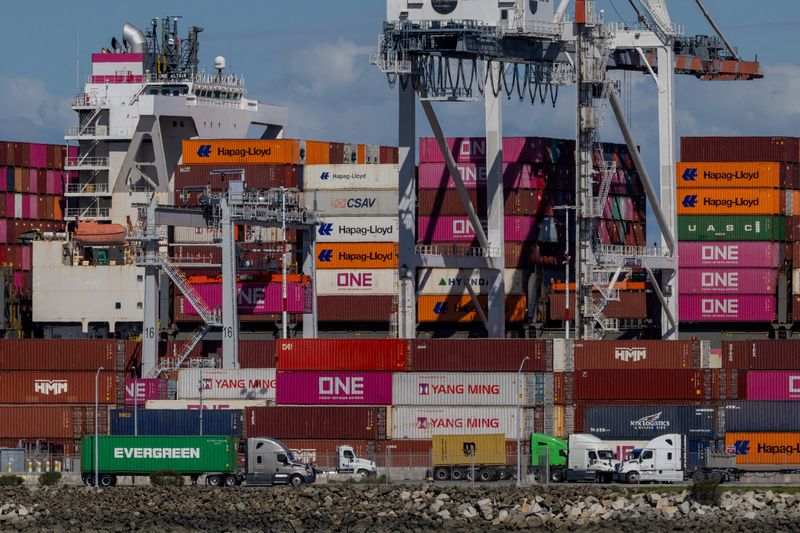
By Karen Freifeld and David Shepardson
WASHINGTON (Reuters) -The U.S. added six subsidiaries of Inspur Group, China’s leading cloud computing and big data service provider, and dozens of other Chinese entities to its export restriction list on Tuesday.
The Inspur units were listed for contributing to the development of supercomputers for the Chinese military, the Commerce department said in a posting. Five of the subsidiaries are based in China and one in Taiwan. Inspur Group itself was placed on the list in 2023.
The Inspur units are among about 80 companies and institutes added to the export control list Tuesday. Over 50 are based in China. Others are in Taiwan, Iran, Pakistan, South Africa and the United Arab Emirates.
The listings are intended to restrict China’s ability to develop high-performance computing capabilities, quantum technologies and advanced AI, and impede China’s development of its hypersonic weapons program.
"We will not allow adversaries to exploit American technology to bolster their own militaries and threaten American lives," said Commerce Secretary Howard Lutnick.
The Chinese embassy in Washington said on Tuesday it "firmly oppose these acts taken by the US and demand that it immediately stop using military-related issues as pretexts to politicize, instrumentalize and weaponize trade and tech issues."
The U.S. also seeks to disrupt Iran’s procurement of drones and related defense items and prevent development of its ballistic missile program and unsafeguarded nuclear activities.
The government adds companies to the Commerce department’s Entity List for national security or foreign policy concerns. Companies cannot sell goods to those listed without applying for and obtaining licenses, which are likely to be denied.
Commerce official Jeffrey Kessler said the administration aims to prevent "U.S. technologies and goods from being misused for high performance computing, hypersonic missiles, military aircraft training, and UAVs (drones) that threaten our national security."
The Inspur Group did not immediately respond to a request for comment.
When Inspur Group was placed on the list in 2023, executives from AMD (NASDAQ:AMD) and Nvidia (NASDAQ:NVDA) were questioned about their dealings with the company. At the time, chip industry insiders and their advisers said firms were trying to assess whether they had to halt supplying Inspur’s subsidiaries.Reuters could not immediately determine whether the U.S. companies continued to do business with the subsidiaries.
Nvidia declined to comment, and AMD did not immediately respond to a request for comment.
Chinese firms Nettrix Information Industry Co, Suma Technology Co, and Suma-USI Electronics, are among the other companies added to the list. The U.S. said they were added for helping develop Chinese exascale supercomputers, which can process vast amounts of data at very high speeds and conduct large-scale simulations.
The companies also have provided manufacturing capabilities to Sugon, also known as Dawning Information Industry Co, a computer server manufacturer added to the Entity List in 2019 for building supercomputers used by the military, the Commerce department said.
The companies could not immediately be reached for comment.
Other companies were added to the list for acquiring U.S.-origin items to advance China’s quantum technology capabilities, and for selling products to companies who supply other listed parties, including Huawei, the tech conglomerate viewed as at the center of China’s AI ambitions.
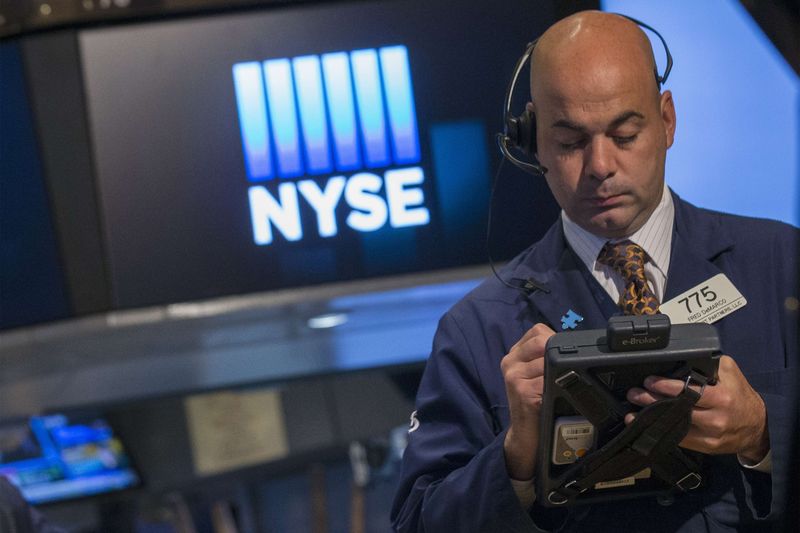
U.S. stock index futures moved little on Tuesday evening with investors remaining on edge in anticipation of more cues on President Donald Trump’s trade tariffs, while focus also turned to a string of upcoming economic readings.
Futures steadied after a mildly positive session on Wall Street, as gains in most of the magnificent seven offset weakness in sectors outside of tech. Economically sensitive stocks fell after consumer confidence data read weaker than expected for March, signaling sustained weakness in private spending.
S&P 500 Futures rose 0.1% to 5,831.25 points, while Nasdaq 100 Futures rose 0.1% to 20,517.50 points by 19:26 ET (23:26 GMT). Dow Jones Futures steadied at 42,917.0 points.
Trump tariff uncertainty builds as April 2 deadline approaches
Trump’s tariffs remained a major point of focus ahead of an April 2 announcement on more tariff measures. Reports suggesting that Trump will impose less strict tariffs than initially feared were a big point of support for Wall Street this week.
But the 47th President still kept up his threats of more tariffs, claiming that duties on automobile imports were still coming, and that he will impose lumber and semiconductor tariffs later.
Trump is expected to announce reciprocal tariffs on about 15 major U.S. trading partners next week, with the potential scope and impact of the tariffs remaining unclear.
Wall St marks third straight day of gains
Wall Street indexes advanced on Tuesday, buoyed chiefly by gains in heavyweight technology stocks. Tesla Inc (NASDAQ:TSLA) rose more than 3% even after data showed its European sales slumped for a second straight month.
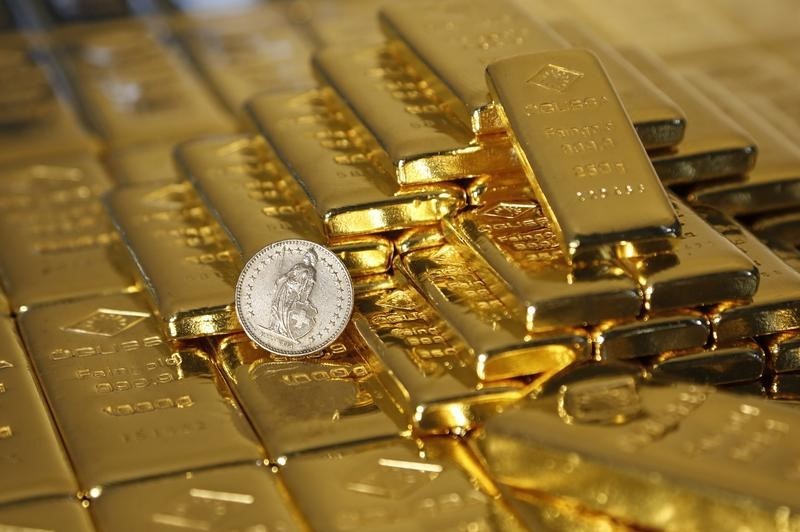
Gold prices rose slightly in Asian trade on Tuesday, remaining pinned below recent record highs amid easing concerns over the severity of U.S. President Donald Trump’s planned trade tariffs.
But haven demand still remained relatively high amid uncertainty over just what tariffs will be imposed on Trump’s April 2 deadline. Investors were also cautious before a string of key economic readings this week.
Gold and other precious metals retreated from recent peaks this week, as risk appetite improved on reports that Trump’s tariffs will be less severe than feared. But weakness in the dollar limited bigger losses in metal markets, keeping them close to recent highs.
Spot gold rose 0.1% to $3,015.51 an ounce, while gold futures expiring in May rose 0.1% to $3,048.05/oz by 00:59 ET (04:59 GMT).
Gold falls from record highs as Trump tariff concerns ease
Spot gold prices- which reflect near-term demand for physical gold- fell sharply from a record high of $3,057.51/oz hit last week.
Softer gold prices were driven chiefly by improving risk appetite, with Wall Street also rebounding sharply from recent lows this week.
Traders were seen increasing bets that Trump’s April 2 tariffs will not include key sectors such as semiconductors, automobiles, and pharmaceuticals. Trump’s reciprocal tariffs are also expected to be against a select group of about 15 countries, limiting their overall impact.
But the impact and scope of Trump’s policies still remained uncertain, keeping markets biased towards havens. Gold still traded above the coveted $3,000/oz level, which it breached earlier in March.
This notion saw the yellow metal clock some gains on Tuesday. Other precious metals also advanced, with silver futures rising 0.7% to $33.673 an ounce, while platinum futures steadying at $967.10 an ounce.
Among industrial metals, benchmark copper futures on the London Metal Exchange rose 0.4% to $9,989.60 an ounce, while May copper futures jumped 0.9% to $5.1280 a pound.
Copper prices were boosted by growing fears of a supply crunch, amid potential U.S. import tariffs and Chinese refinery closures.
PCE, GDP data awaited for more cues
Focus this week was squarely on key U.S. economic data for more cues on the economy and interest rates.
PCE price index data- which is the Federal Reserve’s preferred inflation gauge- will be the biggest point of focus this week. The print is due on Friday, with core PCE inflation expected to remain well above the Fed’s 2% annual target.
Before that, a revised reading on fourth-quarter gross domestic product is due on Thursday. The print comes amid growing concerns over a potential U.S. recession- fears of which were exacerbated by uncertainty over Trump’s policies.
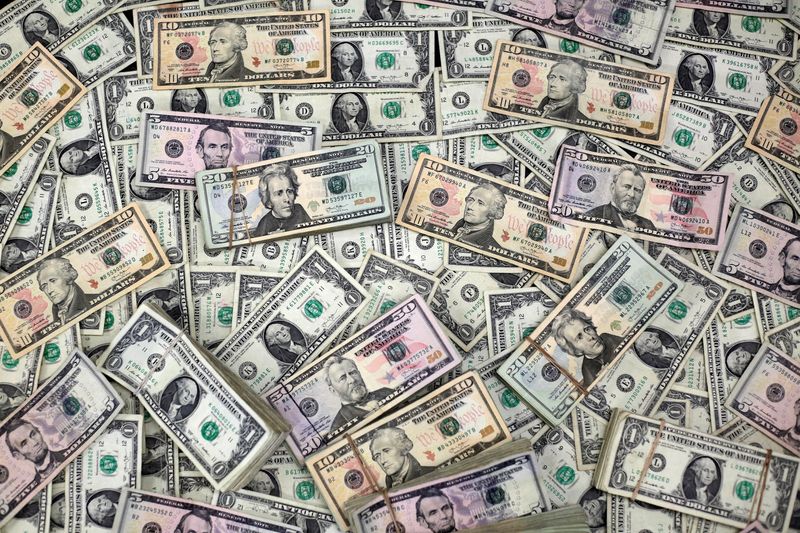
By Tom Westbrook
SINGAPORE (Reuters) - The dollar hit a three-week high on the yen early on Tuesday and was firm across the board after some strong U.S. services data and cautious optimism on the tariff front.
President Donald Trump said not all of his threatened levies would be imposed on April 2 and some countries may get breaks, which helped the dollar and the mood on Wall Street overnight by soothing some fears about a slowdown in U.S growth.
The dollar jumped 0.9%, pulling above 150 yen, then rose a little further in the Asia morning to a three-week high of 150.92 yen.
A strong services component in S&P Global’s flash U.S. PMI figures pushed up U.S. yields and coincided with weakness in Japan, where services and manufacturing were both in contraction.
The dollar also hit its strongest since March 6 at $1.0781 per euro, as a powerful rally in the common currency loses steam.
It was last trading at $1.0796, while sterling hit a two-week low of $1.2883 before steadying at $1.2918 in Asia trade. The U.S. dollar index notched a fourth straight session of gains to settle at 104.3.
But with Trump vowing that automobile tariffs are coming soon and the market implications of the levies complicated by concerns about U.S. growth, the next move is not obvious.
Data from the Commodity Futures Trading Commission on Friday showed that speculators turned net bearish on the U.S. currency last week for the first time since October, though the position is close to neutral.
"It seems like nobody knows what to do with the USD," said Brent Donnelly, President at analytics firm Spectra Markets.
"The EUR/USD trade has petered out, as have the massive move in rate differentials and relative equity performance," he said.
"The view that tariffs are unambiguously bullish USD has been challenged by the price action in 2025, and so even when we get the information on what tariffs look like next week, it will be hard to know what we are supposed to do."
The Australian dollar seemed to catch support from optimism about Trump’s tariff flexibility, and was steady at $0.6282. Australia’s government will unveil a pre-election budget at 0830 GMT, aimed at cost of living relief.
Bitcoin rode about 3% higher with the mood to trade around $87,400 in Asia. The New Zealand dollar slipped to its lowest in a week at $0.5725.
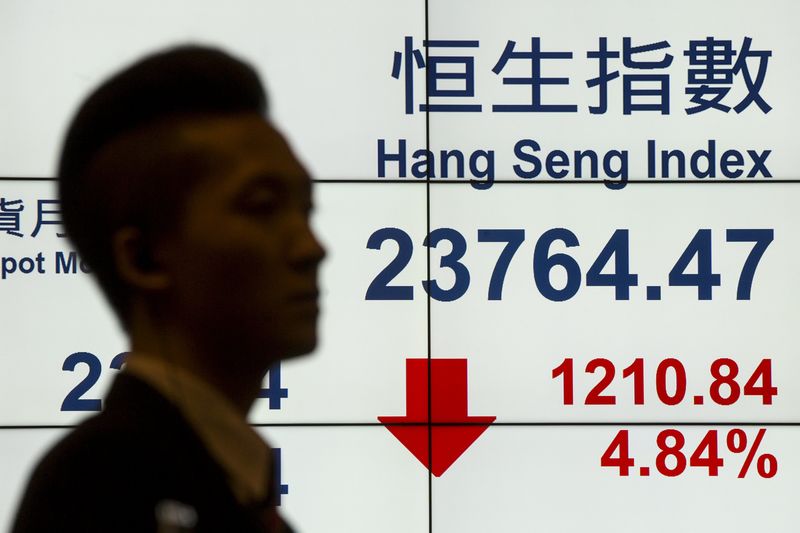
Most Asian stocks rose on Tuesday, extending recent gains amid growing bets that U.S. President Donald Trump’s tariff agenda will be less severe than expected.
But Chinese markets were outliers, especially shares in Hong Kong, as profit-taking in heavyweight technology stocks from a stellar year-to-date rally battered the Hang Seng.
Broader Asian markets took a positive lead-in from Wall Street, which clocked strong gains during Monday’s session as reports suggested that Trump’s April 2 tariffs will be less severe than initially feared.
But Wall Street futures fell slightly in Asian trade, as investors still remained cautious over the impact of Trump’s tariffs, given that several Asian countries will be targeted by his reciprocal tariffs.
Japan’s Nikkei advances, TOPIX hits 9-mth high
Japan’s Nikkei 225 index was among the best performers in Asia on Tuesday, rising 0.7% on support from heavyweight export-oriented stocks, which tracked some weakness in the yen.
But domestically-exposed Japanese stocks also advanced, with the TOPIX index briefly hitting its highest level since July 2024.
Still, sentiment towards Japan soured this week after softer-than-expected purchasing managers index data. But bumper wage hikes and increased private consumption are expected to underpin activity in 2025, although they are also expected to elicit more interest rate hikes by the Bank of Japan.
The minutes of BOJ’s January meeting- where the central bank raised rates by 25 basis points- showed policymakers discussing further hikes.
Other Asian markets advanced, with Australia’s ASX 200 adding 0.4%, while Singapore’s Straits Times surged 0.9% to a record high.
South Korea’s KOSPI lagged, falling 0.3% despite strong gains in Hyundai Motor (KS:005380) (OTC:HYMTF) after it announced plans to invest $21 billion in the U.S.
Futures for India’s Nifty 50 index pointed to a mildly positive open, as the index rebounded further from nine-month lows hit at the beginning of March. The Nifty hit a 1-½ month high on Monday.
Chinese stocks fall, Hong Kong slides 2% on tech losses
China’s Shanghai Shenzhen CSI 300 and Shanghai Composite indexes fell 0.2% and 0.1%, respectively, while the Hang Seng was the worst performer in Asia with a 2% drop.
Major Chinese tech stocks were battered by profit-taking after optimism over more stimulus and China’s artificial intelligence prospects drove a stellar rally so far in 2025.
Xiaomi (OTC:XIACF) Corp (HK:1810) sank 5% and was among the biggest weights on the Hang Seng after it raised $5.5 billion in an upsized Hong Kong share sale. The stock recently hit a record high on optimism over its prospects in the crowded electric vehicle market.
Alibaba (NYSE:BABA) (HK:9988) fell 2.7% after Chair Joseph Tsai warned of a growing bubble in the AI data center space, amid concentrated but overlapping efforts in the U.S. and China to build more infrastructure.

Shares of Hyundai (OTC:HYMTF) Motor (KS:005380) rallied in Seoul trade on Tuesday after the South Korean carmaker, along with U.S. President Donald Trump, announced a $21 billion investment in the U.S.
Shares of the automaker jumped as much as 7.5% to 229,000 won, helping spur a 0.3% rise in the KOSPI index.
Hyundai said it will invest about $9 billion by 2028 to boost production capacity in the U.S. to 1.2 million vehicles, and $6 billion to expand partnerships with U.S. companies. Additionally, Hyundai Steel (KS:004020) will invest $5.8 billion to build a new plant in Louisiana that is projected to produce over 2.7 million metric tons of steel per year.
The move comes as Hyundai seeks to appease the Trump administration and potentially gain some relief from the 47th President’s plans for steep trade tariffs. The automaker’s investment in the U.S. is also in line with Trump’s agenda of bringing more businesses to the U.S.
Hyundai- the world’s third-largest automaker by sales- stands to be directly impacted by Trump’s proposed automobile tariffs, which would likely weigh on its U.S. sales. Trump’s planned reciprocal tariffs against South Korea will add to this impact.
But the company can duck Trump’s tariffs by increasing its U.S. production. Hyundai currently has two factories in the U.S.- in Alabama and Georgia- with a combined annual capacity of 1 million vehicles.
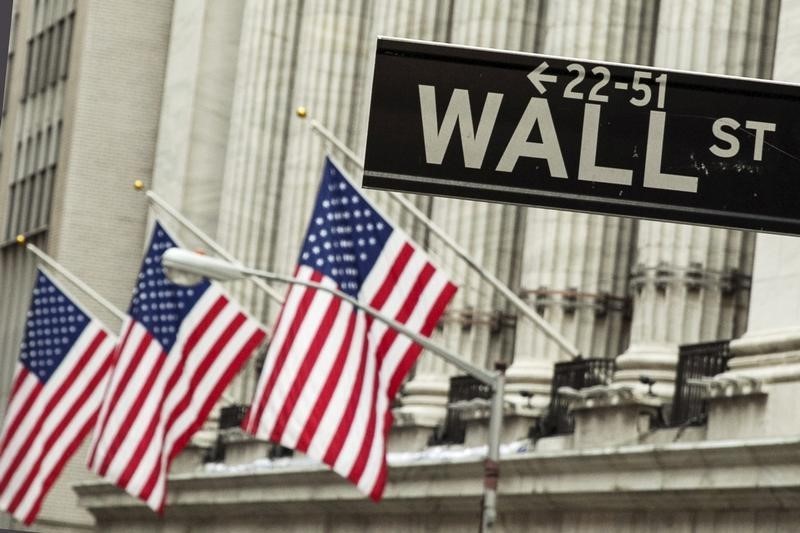
The S&P 500 closed sharply higher Monday, led by tech as sentiment was boosted by reports indicating that upcoming U.S. trade tariffs will be narrower and less strict than initially feared.
At 4:00 p.m. ET (20:00 GMT), the Dow Jones Industrial Average climbed 597 points, or 1.4%, the S&P 500 index rose 1.7%, and the NASDAQ Composite gained 2.3%.
Worries over the Trump administration’s tariffs have battered Wall Street in recent weeks, with the major indices slumping to six-month lows earlier this month as markets feared that the tariffs will increase inflation, disrupt global trade and dent economic growth.
U.S. reciprocal duties to be limited
However, reports from Bloomberg and the Wall Street Journal emerged over the weekend indicating that U.S. President Donald Trump will likely not impose sectoral tariffs next week, and that his plans for reciprocal tariffs will be limited to about 15 countries.
Trump has repeatedly touted April 2 as “liberation day” for the U.S., and while tariffs against major U.S. trading partners are still expected to weigh on the economy, their lessened scope offered investors some hope that the impact will be minimal.
"Targeted is obviously better than the alternative, but the trade changes being envisioned are still substantial, and it’s likely they will have negative effects on the economy and corporate profits, at least in the near and medium term," analysts at Vital Knowledge said in a note to clients.
Fedspeak, economic data on tap
Focus this week is on a slew of addresses by Federal Reserve officials for more cues on the U.S. economy, especially after the central bank last week signaled heightened uncertainty over Trump’s policies.
The Fed is widely expected to keep interest rates unchanged in the near-term, with sticky inflation also limiting the scope for rate cuts.
Beyond the Fed, purchasing managers index data for March is set to offer more cues on U.S. business activity. A revised reading on fourth-quarter gross domestic product data is also due this week, as is the personal consumption expenditures price index, an inflation metric closely followed by Federal Reserve policymakers.
In the corporate sector, earnings from discount retailer Dollar Tree (NASDAQ:DLTR) and up-market athletic clothier Lululemon (NASDAQ:LULU) are on the calendar.
Elsewhere, James Hardie Industries (NYSE:JHX) ADRs slumped 17% after the fiber-cement maker said it will acquire outdoor products manufacturer AZEK in a cash and stock deal valued at nearly $9 billion.
Gold Fields (NYSE:GFI) ADRs fell 5% after Australia’s Gold Road Resources rejected the $2.1 billion buyout bid from the gold miner because it believed the offer materially undervalued the company and was "highly opportunistic".
Tesla rallies; 23andMe bankruptcy filings; Nvidia
Tesla Inc (NASDAQ:TSLA) jumped 12% as investors bought the recent dip in the EV maker that has seen its shares decline for straight weeks. There were also reports that the EV’s maker’s showroom in Texas had been targeted with incendiary devices.
23Andme Holding Co (NASDAQ:ME) slumped 59% after the company filed for Chapter 11 bankruptcy protection.
NVIDIA Corporation (NASDAQ:NVDA), meanwhile, climbed 3% as the prospect of less harsher tariffs imposed by the Trump administration eased concerns about tariff-induced headwinds for the chipmaker.
(Peter Nurse, Ambar Warrick contribute to this article.)
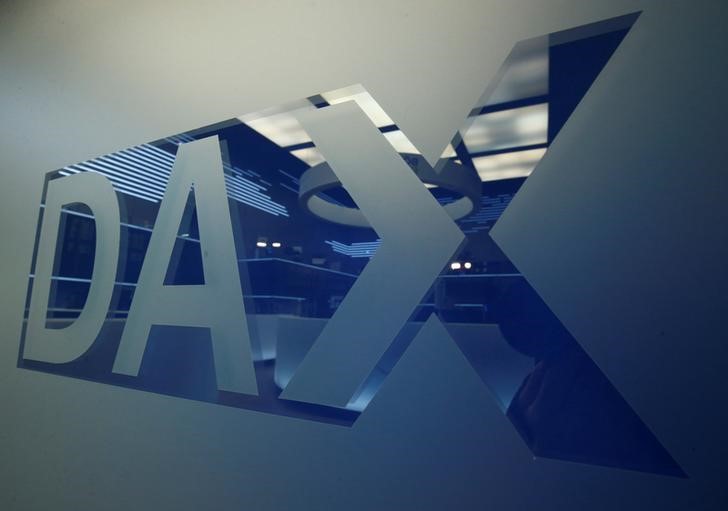
European stock markets rose Monday, starting the new week on a positive note as investors digest more Ukraine peace talks as well as the potential for less severe trade tariffs under U.S. President Donald Trump.
At 04:05 ET (08:05 GMT), the DAX index in Germany climbed 0.8%, the CAC 40 in France gained 0.8% and the FTSE 100 in the UK rose 0.4%.
Targeted trade tariffs
European equity indices have started the new week higher on reports that President Trump is planning a narrower, more targeted agenda for increased trade tariffs at the start of the new month.
Trump is now expected to not impose industry-specific tariffs next week, and will instead apply reciprocal duties only on a targeted set of countries that account for a bulk of the U.S.’ foreign trade, reports from both Bloomberg and the Wall Street Journal said, on Sunday.
Trump said on Friday that there could potentially be “flexibility” for his reciprocal tariff plan.
Fears of a global trade war have weighed heavily, with investors hung up on Trump’s proposed reciprocal tariffs on trading partner countries, which are scheduled to take effect on April 2.
Ukraine ceasefire progress?
Investors will also look to talks between a U.S. delegation and Russian officials in Saudi Arabia later Monday on the potential for a ceasefire in the war in Ukraine, after the U.S. delegation spoke with Ukrainian officials on Sunday.
U.S. special envoy Steve Witkoff expressed optimism on Sunday, saying he believed Russian President Vladimir Putin wanted to end the three-year-old conflict.
"I think that you’re going to see in Saudi Arabia on Monday some real progress, particularly as it affects a Black Sea ceasefire on ships between both countries. And from that, you’ll naturally gravitate into a full-on shooting ceasefire," Witkoff said.
Eurozone PMI data due
Elsewhere, investors will have a chance to study preliminary purchasing managers’ index data for most of Europe, providing a gauge of business activity in the region’s manufacturing and services sectors.
The European Central Bank cut its main interest rate to 2.5% from 2.75% earlier this month, and reduced its forecasts for economic growth in the eurozone.
Another rate cut in April is increasingly likely since inflation is slowing, wage growth is moderating and service price pressures are easing, Greek central bank chief Yannis Stournaras said on Friday.
Crude edges higher
Oil prices edged higher Monday, helped by fresh U.S. sanctions against Iran, adding to the potential for tighter supplies in the coming months.
At 04:05 ET, Brent crude futures rose 0.3% to $71.80 a barrel, and U.S. West Texas Intermediate crude climbed 0.3% to $68.51 a barrel.
Both benchmarks settled higher on Friday and recorded a second consecutive weekly gain, boosted by fresh U.S. sanctions on Iran and the latest output plan from the OPEC+ producer group, with seven of its member states set to cut output to make up for recent production increases.
Market sentiment toward oil prices has also been improved by some optimism that U.S. reciprocal tariffs may be less severe than feared.

By Anant Chandak
BENGALURU (Reuters) - Growth in India’s overall business activity softened in March as robust manufacturing expansion failed to offset a slowdown in the services sector, a private survey showed on Monday.
HSBC’s flash India Composite Purchasing Managers’ Index, compiled by S&P Global, slipped to 58.6 in March from February’s final reading of 58.8, lower than a Reuters poll’s median prediction of 59.0.
The 50-mark divides growth from contraction.
The manufacturing PMI index increased to 57.6 from 56.3, remaining in the expansion territory for more than three-and-a-half years.
But the dominant-services sector’s PMI index fell to 57.7 from 59.0 in February, contributing to the fall in the overall index.
"India’s manufacturing sector expanded at a faster pace in March ... The output index rose to its highest level since July 2024," noted Pranjul Bhandari, chief India economist at HSBC.
New orders - a key gauge for demand - and output, rose from last month, signaling better operating conditions for manufacturers. In contrast, new business in services eased as demand took a hit.
However, international demand for both manufacturing and services slowed, expanding at the slowest pace in three months.
"The moderation in new export orders growth was also noteworthy amid tariff announcements," added Bhandari.
U.S. President Donald Trump has imposed fresh tariffs on goods from China, Canada and Mexico and his constant flip-flops on trade has made the business outlook uncertain. More tariffs on U.S. trading partners are looming on April 2.
Indian businesses were less upbeat about future activity as sentiment for the coming year fell to a seven-month low, which also slowed the pace of hiring.
Input costs increased at a faster pace in March as goods producers recorded an acceleration to a three-month high.
"The margin squeeze on manufacturers intensified as input price inflation ticked up while factory gate prices rose at the weakest rate in a year," she said.
Businesses did not pass on higher input costs to clients and overall charge inflation rose at its weakest pace since February 2022.
India consumer inflation fell below the Reserve Bank of India (NSE:BOI)’s (RBI) medium-term 4% target in February for the first time in six months, raising the chances of another rate cut next month.

